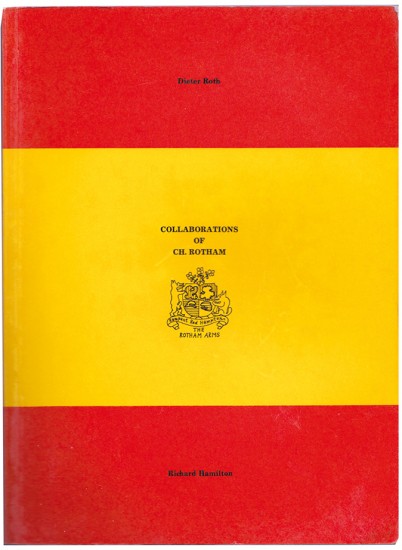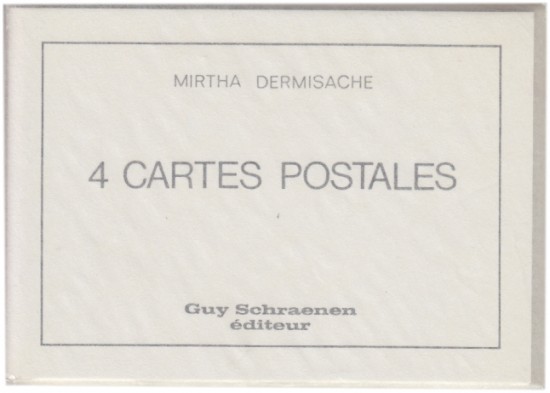Die Unterweysung der Messung mit dem Zirckel un Richtscheyt
Durer, Albrecht
(Nuremburg). (Hieronymus Formschneyder). 1525
Sold
A large copy in limp vellum of the first edition of Dürer's geometrical treatise on perspective and the uses of mathematical geometry in art.
The importance of 'Die Unterweysung der Messung' lies in the fact that it is the first literary document in which a strictly representational problem (painting) received a strictly scientific treatment at the hands of a Northern European.
The Preface of this 'Course in the Art of Measurement' is the first public statement of Dürer's lifelong conviction: that German painters were equal to all others in practical skill and power of imagination, but that they were inferior to Italians in a rational knowledge ('Kunst'), which would prevent them from errors and 'wrongness' in their work. The Unterweysung was Dürer's response to this: 'I have decided to teach geometry's rudiments and principles to all youngsters eager for art ... it may benefit not only painters but also goldsmiths, sculptors, stonemasons, carpenters and all those who have to rely on measurement ... '. (From the Preface).
The 'Unterweysung' is, therefore, still a book for practical use and not a treatise on pure mathematics. Dürer wanted to be understood by artists and artisans. Thus where three of the Books in the Unterweysung describe problems of linear, two-dimensional, and three-dimensional geometry, the remaining Third Book illustrates the application of geometry to the concrete tasks of architecture, engineering, decoration and typography. [Panofsky: Albrecht Dürer, London].
In the book, Dürer examines the construction of plane curves and helices by means of Euclidian geometry; construction of polygons and their uses in architectural ornamentation, parquet floors, and finally polyhedra, stereometry and perspective. The woodcuts and diagrams are executed with great precision; they include the famous illustrations of the two figures demonstrating a drawing instrument, signed with Dürer's monogram (dated 1525 for this edition) as well as one of an artist drawing a seated man with the aid of Dürer's machine. The text of Book Three contains his famous original treatise on the shaping of Roman capital and Gothic letters and Gothic letters built up by means of small geometrical forms.
There were three further German editions of the 'Unterweysung' in 1533, 1538 and 1603, as well as five Latin editions published between 1532 and 1606.
The importance of 'Die Unterweysung der Messung' lies in the fact that it is the first literary document in which a strictly representational problem (painting) received a strictly scientific treatment at the hands of a Northern European.
The Preface of this 'Course in the Art of Measurement' is the first public statement of Dürer's lifelong conviction: that German painters were equal to all others in practical skill and power of imagination, but that they were inferior to Italians in a rational knowledge ('Kunst'), which would prevent them from errors and 'wrongness' in their work. The Unterweysung was Dürer's response to this: 'I have decided to teach geometry's rudiments and principles to all youngsters eager for art ... it may benefit not only painters but also goldsmiths, sculptors, stonemasons, carpenters and all those who have to rely on measurement ... '. (From the Preface).
The 'Unterweysung' is, therefore, still a book for practical use and not a treatise on pure mathematics. Dürer wanted to be understood by artists and artisans. Thus where three of the Books in the Unterweysung describe problems of linear, two-dimensional, and three-dimensional geometry, the remaining Third Book illustrates the application of geometry to the concrete tasks of architecture, engineering, decoration and typography. [Panofsky: Albrecht Dürer, London].
In the book, Dürer examines the construction of plane curves and helices by means of Euclidian geometry; construction of polygons and their uses in architectural ornamentation, parquet floors, and finally polyhedra, stereometry and perspective. The woodcuts and diagrams are executed with great precision; they include the famous illustrations of the two figures demonstrating a drawing instrument, signed with Dürer's monogram (dated 1525 for this edition) as well as one of an artist drawing a seated man with the aid of Dürer's machine. The text of Book Three contains his famous original treatise on the shaping of Roman capital and Gothic letters and Gothic letters built up by means of small geometrical forms.
There were three further German editions of the 'Unterweysung' in 1533, 1538 and 1603, as well as five Latin editions published between 1532 and 1606.
[84 unnumbered leaves including terminal blank Riv]. Collation: Avi - Nvi, Oiv - Piv, Riv. 4to. (288 x 215 mm). Illustrated with numerous text drawings of geometrical diagrams, architectural figures, and designs for letters, some full-page. Complete with the 2 pasted folded slips on pages Ri and Rii and terminal blank Riv (lacking in many copies). Some staining and soiling, small repaired tear to title and leaf D6. Later full limp vellum wrappers, later endpapers, sprinkled edges, blue cloth box.
#40468










